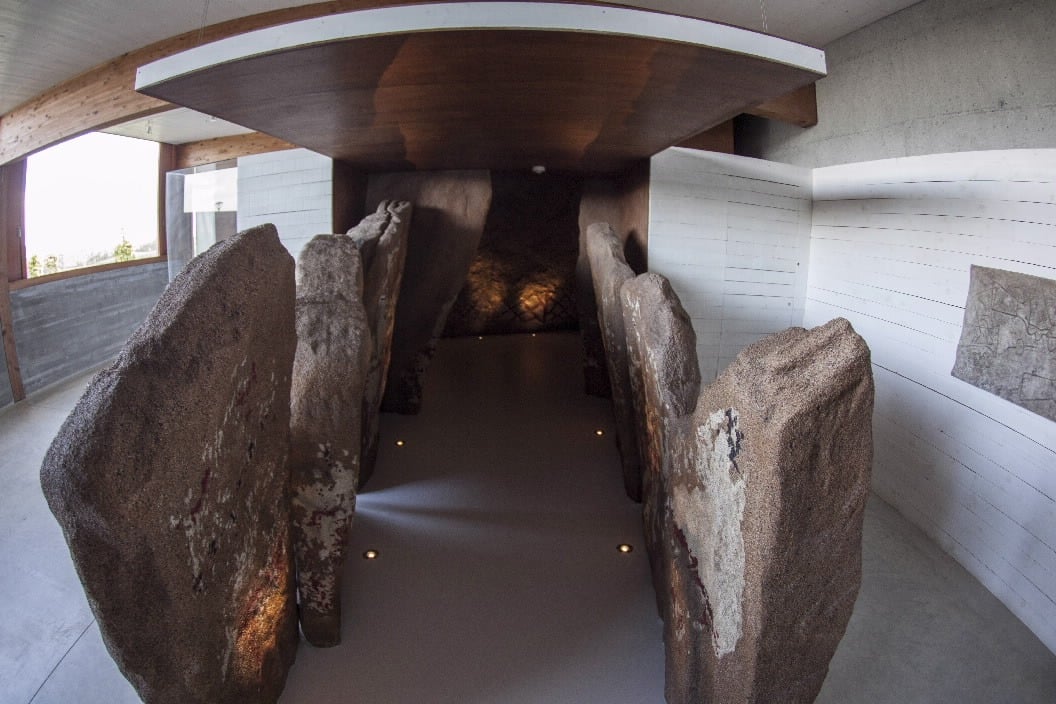Dolmen De Soto: A Neolithic Subterranean Structure In Trigueros, Andalucía, Spain
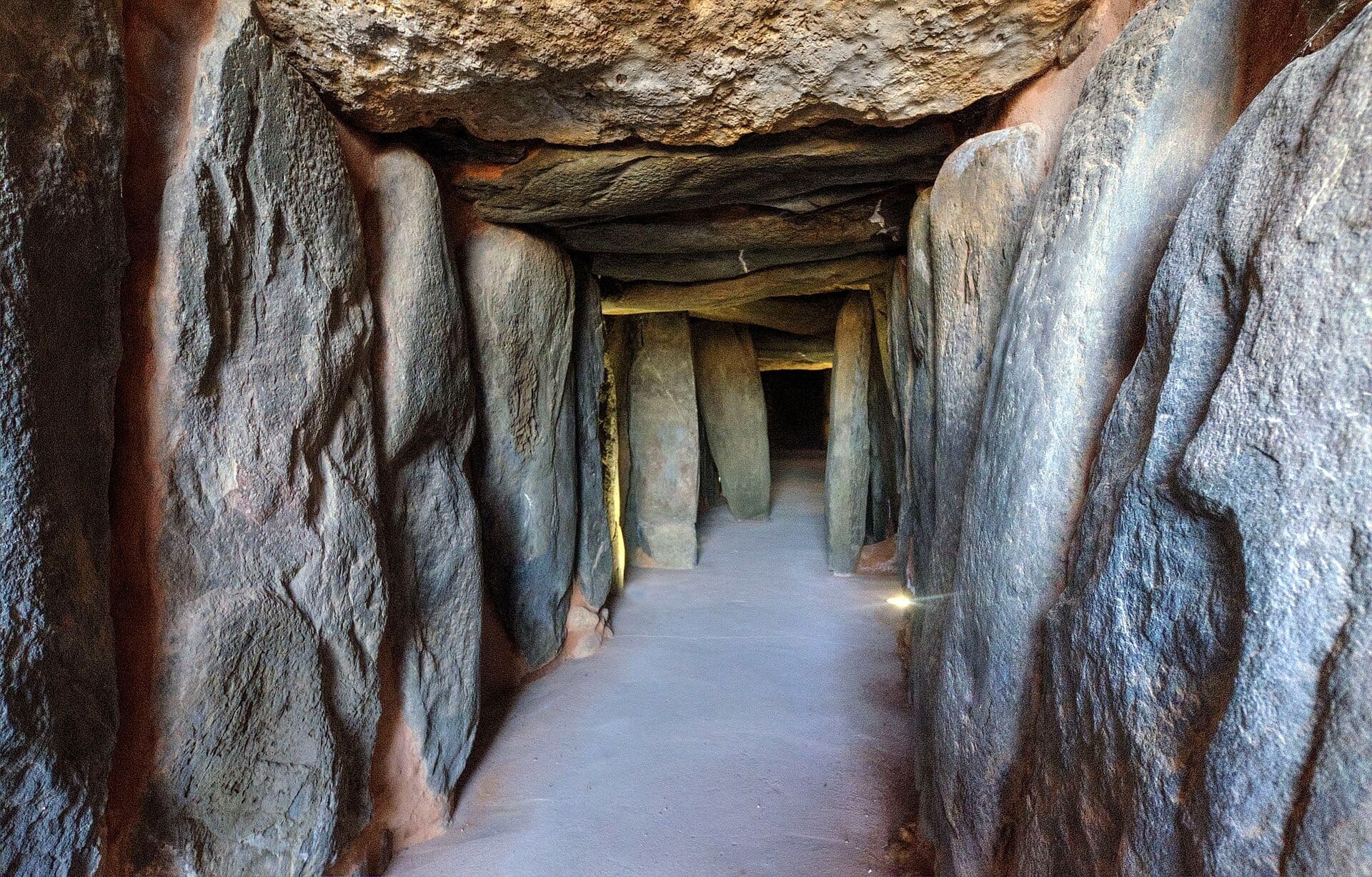
The Dolmen de Soto is a fascinating ancient structure located in Trigueros, Andalucía, Spain.
Built between 4,500 and 5,000 years ago, this Neolithic site is one of the most important in the province of Huelva.
It’s part of a group of around 200 ritual-burial sites that give us a glimpse into the lives and beliefs of the people who lived here thousands of years ago.
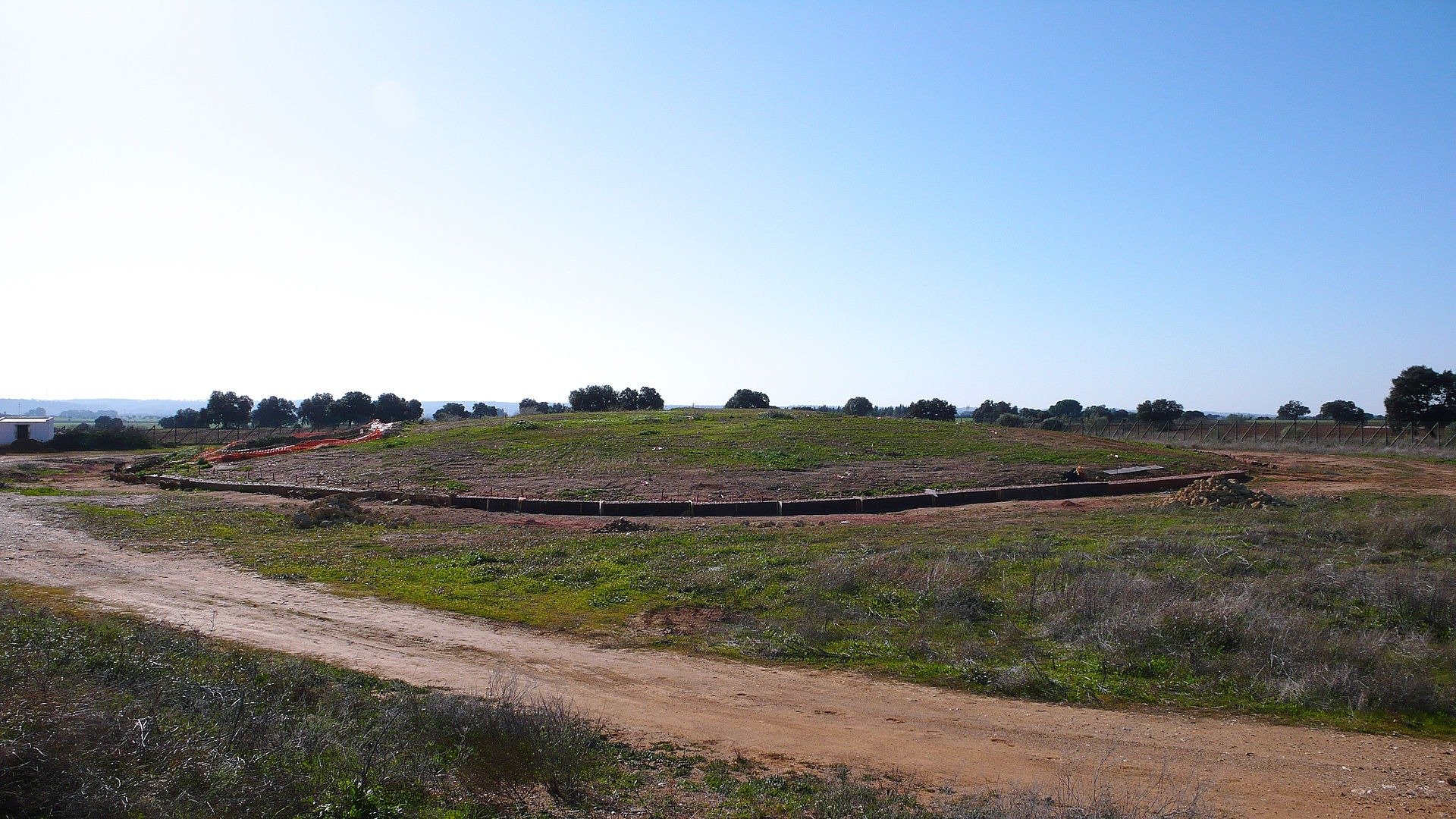
How the Dolmen de Soto Was Discovered
The Dolmen de Soto was discovered by accident in 1922 by Armando de Soto Morillas.
He owned the land known as La Lobita and was planning to build a house there.
Instead, he found something much more valuable—a large underground burial site.
Realizing its importance, de Soto started excavation work immediately.
By 1924, German archaeologist Hugo Obermaier was brought in by the Duke of Alba, Jacobo Fitz-James Stuart, to conduct a more thorough investigation.
Obermaier found eight bodies buried in a fetal position, each accompanied by artifacts like daggers, cups, and marine fossils.
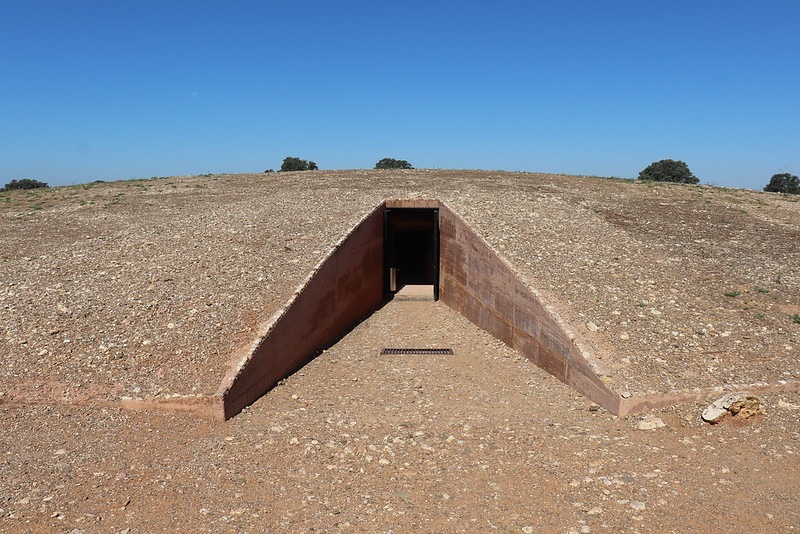
His research showed that the site was not only a place of burial but also held deep spiritual significance.
The Dolmen de Soto was declared a National Monument of Spain in 1931, highlighting its importance.
However, it wasn’t until 1987 that it became publicly owned and protected by the Spanish Ministry of Culture.
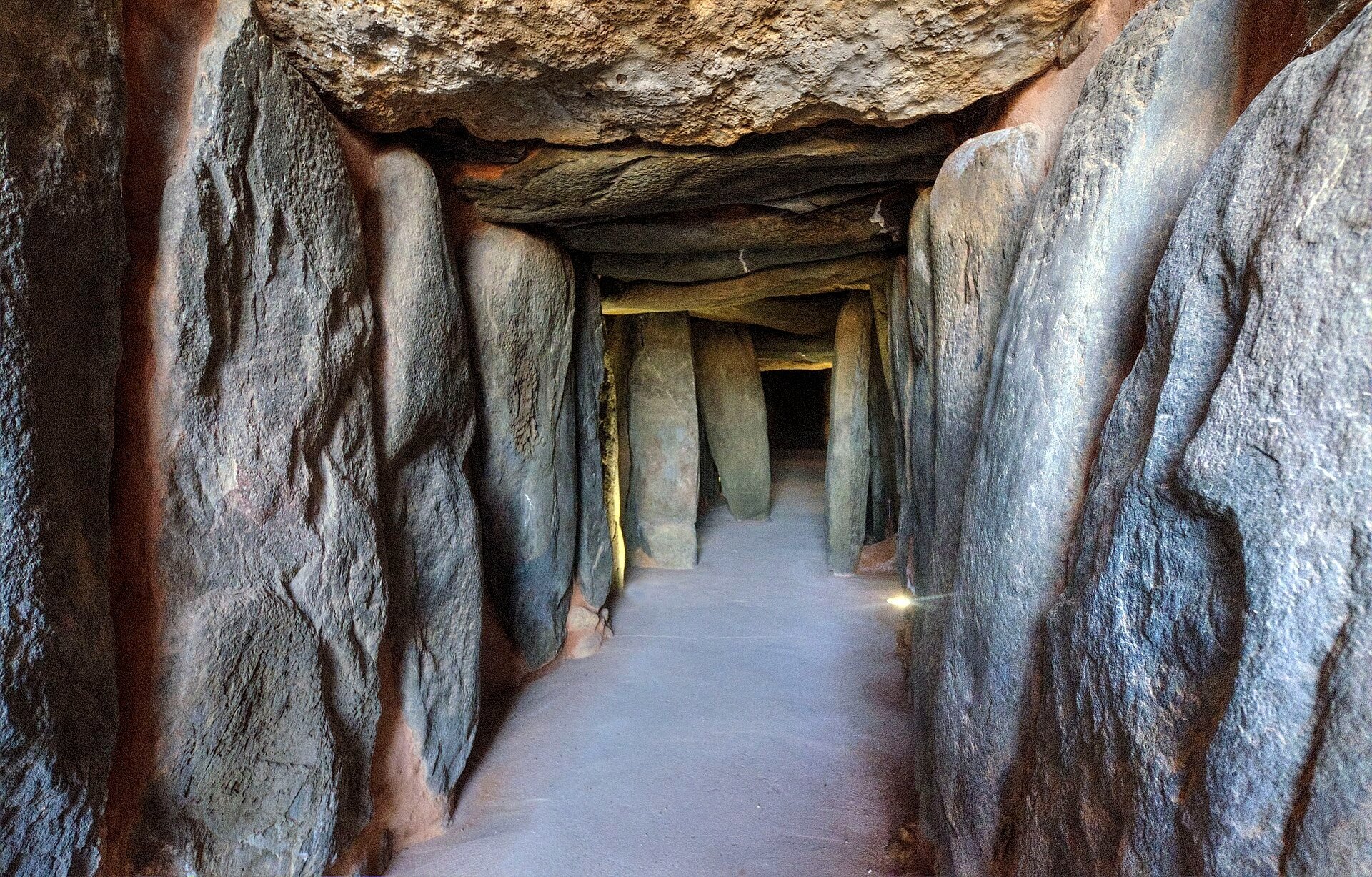
The Monumental Structure of Dolmen de Soto
On the surface, the Dolmen de Soto looks like a simple circular mound, about 75 meters (246 feet) in diameter.
But beneath this mound is a long, V-shaped passageway that stretches for 20.9 meters (69 feet).
The passage starts at a narrow entrance on the western side, only 0.8 meters (2 feet 7 inches) wide and 1.55 meters (5 feet 1 inch) high.
As you move through the passage, it gradually widens and rises in height until it reaches a chamber on the eastern end.
Here, the passage is 3.1 meters (10 feet) wide and 3.9 meters (13 feet) high.
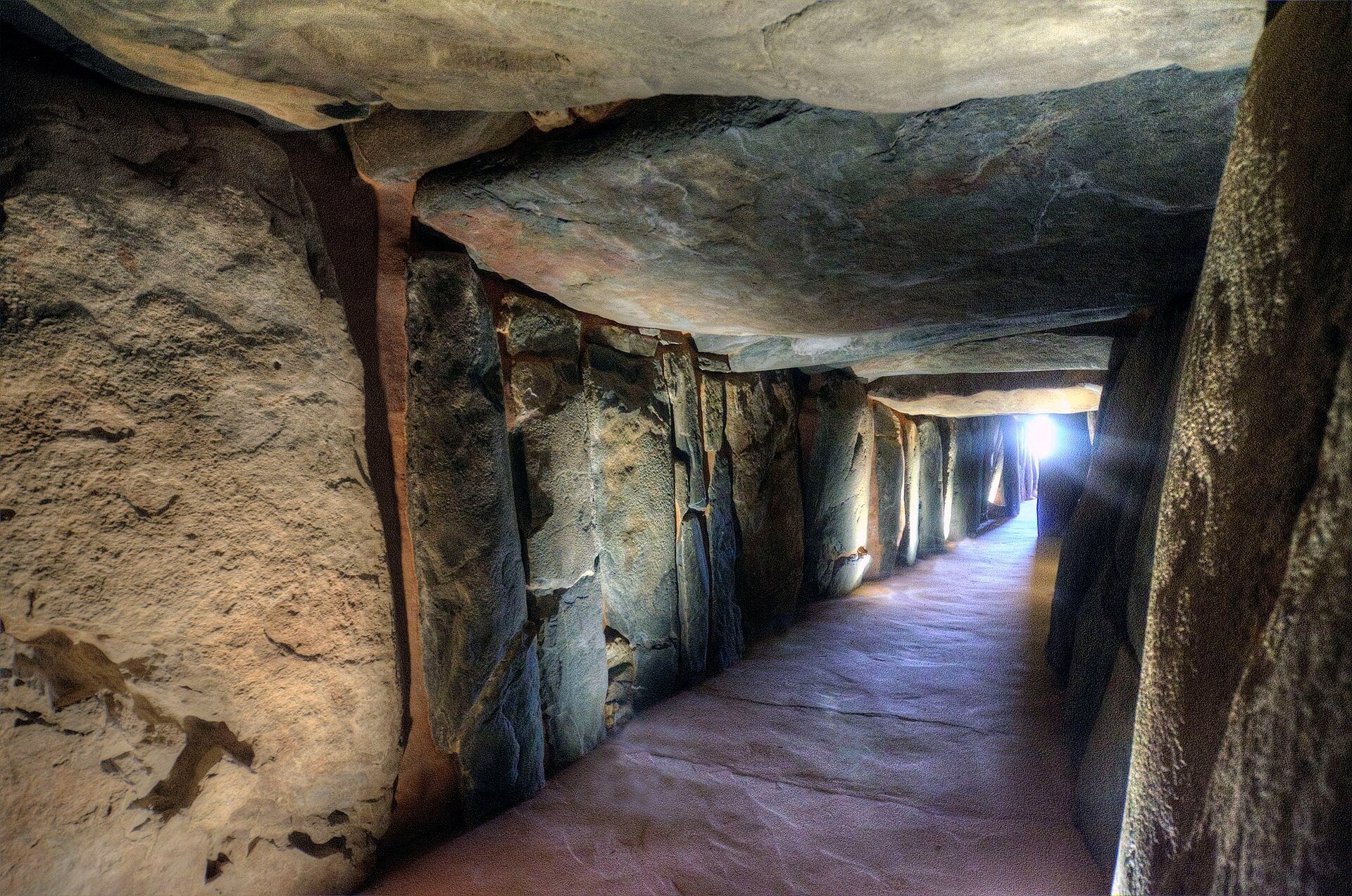
One of the most interesting features of the Dolmen de Soto is its alignment with the sun.
During the equinoxes, the first rays of sunlight enter the passage and illuminate the chamber for a few minutes.
This was likely a symbolic event for the people who built the dolmen, possibly representing the rebirth or resurrection of the dead.
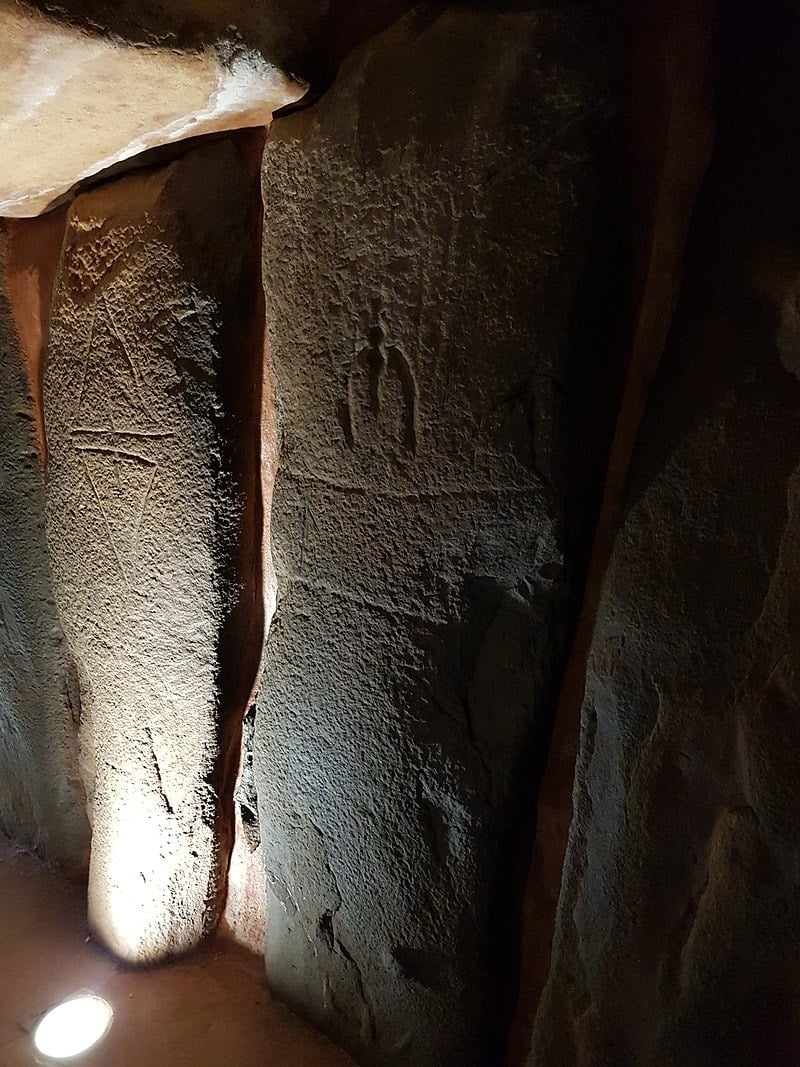
Engravings and Artifacts Inside the Dolmen
The Dolmen de Soto is not just about its impressive structure; it’s also about the engravings and artifacts found inside.
Out of the 64 standing stones that form the passage, 43 are decorated with carvings.
These engravings show human figures, cups, knives, and geometric shapes like lines and circles.
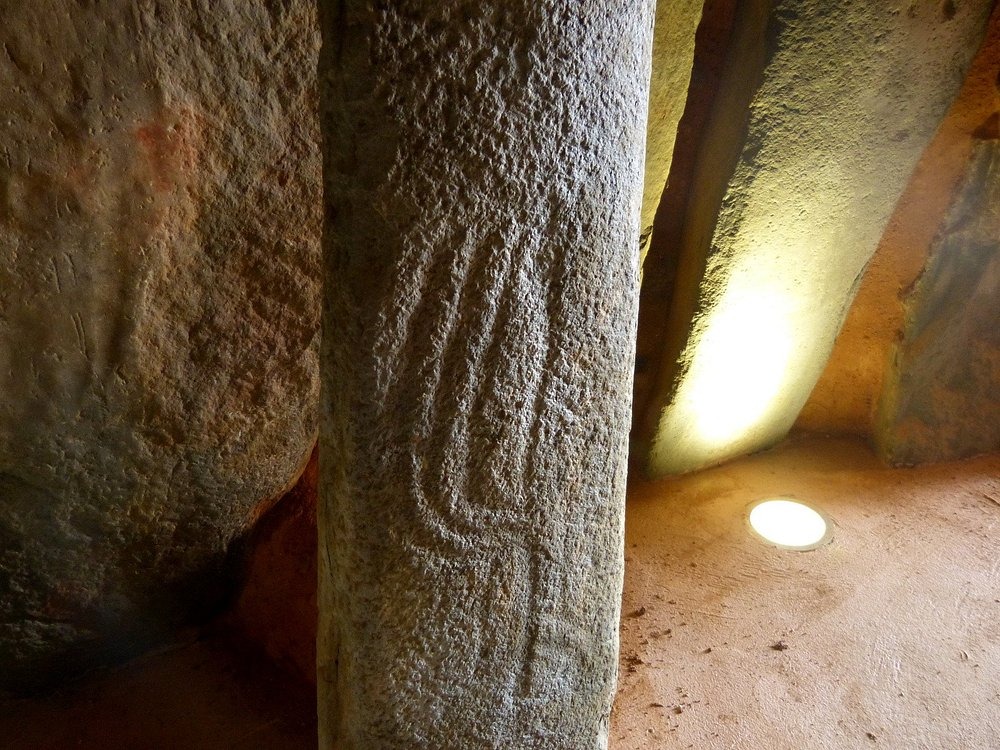
These carvings provide a window into the beliefs and artistic expressions of the Neolithic people.
Although the artifacts found at Dolmen de Soto were fewer than at some other sites, they are still significant.
The daggers, cups, and marine fossils found beside the buried bodies suggest that the site was used for important rituals, even if only for a limited time.
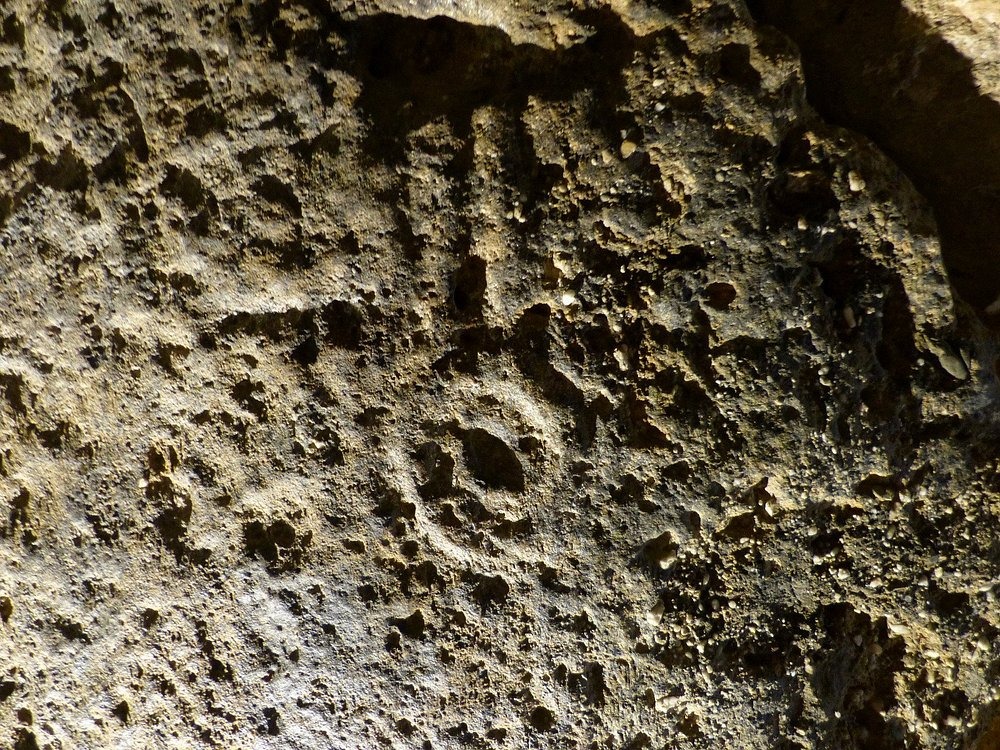
The Dolmen de Soto Interpretation Centre
For those interested in learning more, the Dolmen de Soto is accompanied by an interpretation and reception center.
This underground facility is located just 50 meters from the entrance to the Dolmen and blends seamlessly with the landscape.
Inside, visitors can watch videos and see exhibits that explain the history, structure, and importance of the dolmen.
